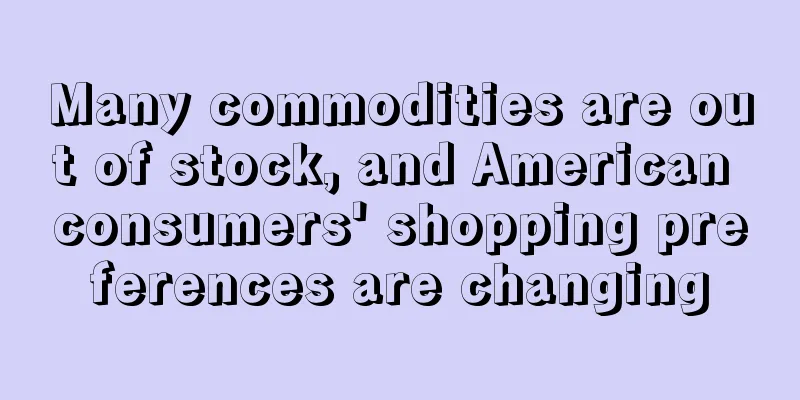Many commodities are out of stock, and American consumers' shopping preferences are changing

|
The supply chain congestion caused by the epidemic has caused unprecedented inventory shortages for almost all types of products , from chips in game consoles to ordinary products such as ties and pajamas . For Amazon merchants , there are also a few cases where "the holiday has passed, but the products have not yet arrived in the warehouse." Faced with "empty" shelves and "zero inventory" products, what changes have occurred in the shopping preferences of American consumers?
1. Choose an alternative
An American mother, Katherine Weber, reportedly promised to buy her 23-year-old son a Sony PlayStation 5, but due to out-of-stock conditions she had to choose a replacement for her son - a second-hand smartphone.
2. Inventory first, satisfaction second
When Groner realized he needed a new tie for his early December wedding, he found the perfect item on Amazon : a skinny black-and-white tie for $7.99 that he was told would be delivered in time.
But four days later, he received an email informing him that the tie was out of stock and would not arrive until January, which plunged him into despair and forced him to search the site again for any tie that could quickly meet his needs .
"For me, it doesn't matter if it's ugly — what matters is that it arrives on time, " said Groner, who ultimately chose a yellow and blue plaid tie.
3. Select Gift Card
On Cyber Monday , the biggest online shopping day of the year , the prevalence of out-of-stock messages increased 8% from a week earlier, according to the Adobe Digital Economy Index.
Based on consumers’ previous shopping preferences, some retailers have begun to select alternatives for consumers in advance. However, many consumers are not satisfied with the alternatives . Statistics show that if consumers don’t like the alternatives they see , they will choose gift cards more often.
4. Choose a new brand
Data shows that the epidemic has greatly changed consumers' shopping habits, and many consumers have begun to try new brands and products when they can't find their first choice . Especially for fast - moving consumer goods, take Americans' panic buying of toilet paper as an example. The shortage of this product has forced consumers to abandon the brands they have been loyal to and look for alternatives.
As Americans enthusiastically emerged from months of pandemic lockdowns, eager to shop again, retailers and manufacturers of all types were caught off guard as they grappled with a shortage of containers to move goods, bottlenecks at ports and a shortage of workers needed to unload them. Many industry analysts don’t expect supply chain issues to be resolved until next year. Supply chain congestion US Consumer Behavior change |
>>: Global e-commerce sales ranking: Fashion ranks first with 760 billion US dollars!
Recommend
PayPal accounts for 93% of online payments in Italy
The online payment method PayPal is widely known ...
Another container ship found a new coronavirus case! It had previously docked at several major ports
According to Taiwan media reports, on September 6...
As the European Cup approaches, AliExpress merchants are actively preparing for the "Super Breakout Day"
Signing Beckham as global spokesperson, becoming ...
A large number of sellers received a notification that the Amazon verification deadline has been advanced!
Verification has been a top priority for Amazon s...
SHEIN plans to hold a charity music festival on May 2 and live broadcast it through the App
Recently, SHEIN announced that it will hold its s...
The pet economy is booming, and the European pet e-commerce platform Zooplus was acquired
In recent years, with the increasing pressure of ...
Zilingo platform B2B logistics transaction volume increased by 80% during Ramadan!
The ongoing pandemic has affected the logistics i...
What is ericprom? ericprom Review, Features
Ericprom is committed to providing better customer...
With over 24.1 million views on TikTok, Spyra electric water gun is all the rage in summer!
As the dog days of summer approach, while we Chin...
What is TripleLift? TripleLift Review, Features
TripleLift is a native advertising service provid...
What is Heels.com? Heels.com Review, Features
Heels.com is part of the ALDO Group and is the wo...
What is easybid? easybid Review, Features
Easybid is a one-stop cross-global media advertisi...
What is PatPat & PatPat Review
PatPat is a mobile maternal and infant export e-c...
What is AIQ? AIQ Review, Features
AIQ is a financial technology company focusing on ...
What is the Central Bank of Ghana? Central Bank of Ghana Review, Features
The Bank of Ghana formulates and implements monet...









